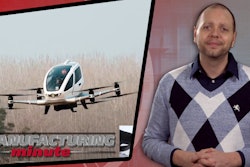Digitalization is becoming increasingly common as manufacturers of components and systems develop ways to make their products more intelligent. The potential benefits in terms of increased efficiency and responsiveness in a production environment are already clear, but there is still uncertainty about how and when the full benefits of the fourth industrial revolution – Industry 4.0 – will materialise.
There are several factors that need to coalesce in order for Industry 4.0 to become a reality. Strong political and economic incentives, the correct investment in skills and training and the availability of advanced tools that make implementation easy will all affect the pace of adoption.
Global Contrasts
Around the world, the economic, political and technological drivers for Industry 4.0 adoption vary considerably. In countries like Germany and the UK, Industry 4.0 is viewed as the route that will lead to the emergence of ‘smart industry’; where people, devices, objects, and systems combine to form dynamic, self-organizing networks of production – made possible by technological advances which constitute a reversal of conventional production process logic.
For the US, the emphasis is more on the role of big data in effecting collaboration, and Industry 4.0 has become synonymous with the Industrial Internet of Things (IIoT). The US government sees support for IIoT as a means to protect jobs and increase the innovation strength of the US economy, while decreasing the international trade deficit. Over the next five years, the US is expected to invest more capital into the digitalization of manufacturing than any other nation or region.
Meanwhile in China, where labour and materials costs are rapidly increasing, digitalization is being championed as a means to transform outdated production methods. Many Chinese manufacturers are still operating in the age of Industry 2.0. However, the political impetus for change is evident in China Manufacturing 2025, a government plan to transform the country into an advanced production nation by the middle of this century. This initiative will see heavy investment in internet architecture, big data and cloud computing, leading to more intelligent factories. The pace of change necessary here is incomparable with other developed nations : China is looking to take a careful, methodical approach to the digitalization of manufacturing, seeking partnerships with more experienced nations along the way.
Industry Variations
Adoption of Industry 4.0 principles also varies between industries. The automotive sector is well-advanced in the adoption of automation, data interchange and advanced production technologies, being motivated by high volume, high quality, cost sensitive manufacture. This sector views process control as the means to further improve the quality of production processes while also reducing operating expenses. In component production plants, Industry 4.0 implementation offers considerable potential, especially in predictive maintenance. Continuous recording and analysis of process data allows plant and system failures to be predicted, inefficient developments to be corrected, and productivity to be improved.
By contrast, the aerospace industry has been slower to adapt automated over manual processes. The reasons are clear enough : production is characterized by relatively small volumes, large components and accessibility problems during assembly. All these factors are barriers to change. Nevertheless, the need to limit quality costs and cycle times, to exclude human factors as a source of error as far as possible, and to become more efficient generally are key drivers. Major aerospace OEMs are beginning to embrace intelligent software and digital networking, with advanced assembly tools making a key contribution. The potential for small changes to make a big difference are particluarly evident in this sector ; a one percent improvement in fuel efficiency represents a saving of $2 billion for the airlines.
Industry 4.0 offers the means to completely digitalize the product development life cycle. This in turn allows manufacturers to provide customers accurate traceability, quality control, and cost effective new products.
Individual Responsibilities
In addition to global and industry sector differences, the successful adoption of Industry 4.0 is reliant on the human factor – our willingness to understand, embrace and deliver change. According to Harvard Business Review’s From Data to Action report, the most difficult aspect for organizations to change on the route to smarter factories is their internal culture.
Successful implementation of Industry 4.0 therefore requires strong leadership. The person at the top must set the example and be seen to fully embrace change, commit to it, and communicate it in a compelling way. The philosophy of making fact-based decisions using quantitative manufacturing data will need to be coached into all levels of management. Indeed, everyone at every level of their organization needs to understand how they will benefit from Industry 4.0. For example, the use of collaborative robots (cobots) for unergonomic, complex or repetitive tasks does not signal the rise of the machines and unemployment. It means that manual and automated processes within production can interact with each other in the most effective way. It means protecting operatives from genuine health issues associated with repetitive tasks, such as HAVS and RSI. In addition, real-time production monitoring renders many manual interventions unnecessary, freeing up time for personnel to undertake more profitable work.
Tooling Up
A smart factory requires a vast range of products embedded with systems, sensors, and actuators that are all linked to one another via the internet, including assembly tools. These tools need to support the transition from traditional ways of working to a more digitized workplace where optimization delivers economies and efficiencies we are only just beginning to exploit.
As part of this transition, intelligent tools must provide support to operators as they adapt to Industry 4.0 ways of working. In the past, an assembly worker was valued because they could perform the same task competently on the same line day after day. In a smart factory, that same worker may be required to rivet body panels one shift and wire up a lighting system on the next. Traditional training in all these skills takes time – and the pace of technological change can render such learning obsolete very quickly.
So how can we ensure that modern assembly workers feel valued and competent, and can access the information they need to complete diverse tasks efficiently and without error? One answer is PivotWare, a comprehensive process control platform that guides operators through a specific set of assembly tasks as part of an automated process. A graphic and textual display shows them exactly what tools to use, what components to apply and where to fix them. The system verifies that each step has been completed correctly before allowing the operator to move to the next stage. The platform is programmable by the customer using software tools provided, so responsiveness to changes in production requirements is unhampered by any need for specialist intervention.
Looking ahead, specialists like Desoutter are already developing the next generation of tools that can deliver Industry 4.0. capabilities and support the smart factory model. We confidently predict that tomorrow’s operating platform will deliver a major step change in multi-tool management, offering far greater connectivity and flexibility than is currently possible.
Conclusion
Industry 4.0 may have some way to go, but it is gathering pace. Governments around the globe acknowledge its potential to deliver wealth and job security and are taking positive steps to help their industry-base make the transition. Forward-thinking companies also recognise that they have to invest in the latest technologies if they want to achieve long-term improvements in production efficiency. There is also a growing awareness of the human factor, and how we need to make sure that people are equipped with the right tools to be more flexible and adaptable. If we want these things to happen more quickly, then we must all play our part in accelerating the transformation.
Ivo Maltir is vice president of Desoutter.























